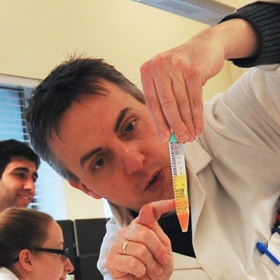CRISPR-Cas: Interactions with Genome and Physiological Maintenance
A special issue of Genes (ISSN 2073-4425). This special issue belongs to the section "Molecular Genetics and Genomics".
Deadline for manuscript submissions: closed (16 November 2020) | Viewed by 44695
Special Issue Editors
Interests: molecular biology; protein biochemistry; CRISPR-cas immunity; homologous recombination; DNA Repair
Interests: cell biology; DNA replication; replication termination; chromosome dynamics
Special Issue Information
Dear Colleagues,
CRISPR-Cas enzymes provide a growing smorgasbord of tools for genetic engineering of DNA and RNA, and in genome editing to alter cell physiology in bacteria, plants and mammals. Interactions between CRISPR-Cas and host DNA repair enzymes are important for successful genome editing because editing enzymes generate DNA damage sites. These trigger DNA repair systems and can provoke wider genomic stress with potential to disrupt DNA replication and cell cycle progression. In their native cells CRISPR-Cas adaptive immunity systems functionally interact with DNA repair and genome stability systems, factors that promote building of the DNA-based CRISPR immunity system. CRISPR-Cas enzymes also impact on other physiological systems in interesting ways by mechanisms unknown, for example in bacterial biofilm formation. Understanding interplay between CRISPR-Cas enzymes and other host physiologies is a frontier for improving efficacy of gene-editing protocols, furthering understanding of DNA repair in healthcare, and for understanding prokaryotic biology. This collection of articles will evaluate current knowledge, for example:
- Developments in understanding off-target effects of class II CRISPR-Cas systems; Cas9, Cas12a, Cas13a.
- Interactions of DNA repair, replication and recombination with native CRISPR-Cas systems.
- Interactions of DNA repair, replication and recombination with heterologous CRISPR-Cas systems used in genome editing.
- Genome editing in plants.
- Genome editing for growth, sustainability and development projects and in human disease.
- DNA editing using adaptation enzymes Cas1-Cas2.
- Class III CRISPR systems and cell signaling.
- Class I CRISPR systems and biofilm formation.
Dr. Ed Bolt
Dr. Christian Rudolph
Dr. Ivana Ivancic-Bace
Guest Editors
Manuscript Submission Information
Manuscripts should be submitted online at www.mdpi.com by registering and logging in to this website. Once you are registered, click here to go to the submission form. Manuscripts can be submitted until the deadline. All submissions that pass pre-check are peer-reviewed. Accepted papers will be published continuously in the journal (as soon as accepted) and will be listed together on the special issue website. Research articles, review articles as well as short communications are invited. For planned papers, a title and short abstract (about 100 words) can be sent to the Editorial Office for announcement on this website.
Submitted manuscripts should not have been published previously, nor be under consideration for publication elsewhere (except conference proceedings papers). All manuscripts are thoroughly refereed through a single-blind peer-review process. A guide for authors and other relevant information for submission of manuscripts is available on the Instructions for Authors page. Genes is an international peer-reviewed open access monthly journal published by MDPI.
Please visit the Instructions for Authors page before submitting a manuscript. The Article Processing Charge (APC) for publication in this open access journal is 2600 CHF (Swiss Francs). Submitted papers should be well formatted and use good English. Authors may use MDPI's English editing service prior to publication or during author revisions.
Keywords
- CRISPR-Cas
- DNA repair
- genome editing
- bacterial physiology
- microbiology
- homologous recombination
- helicases
- nucleases








